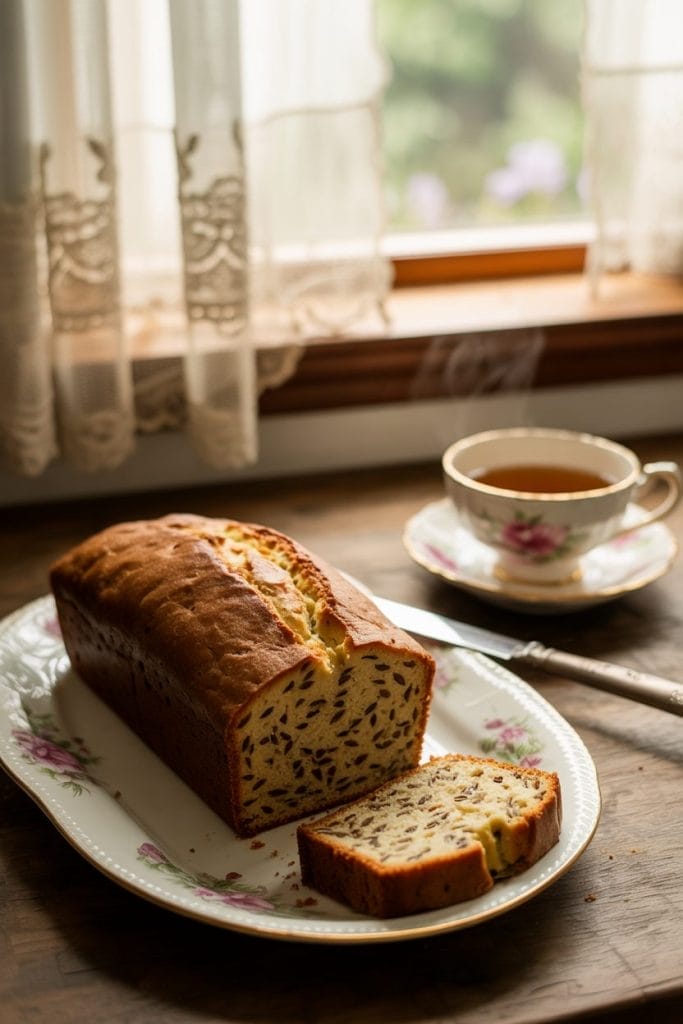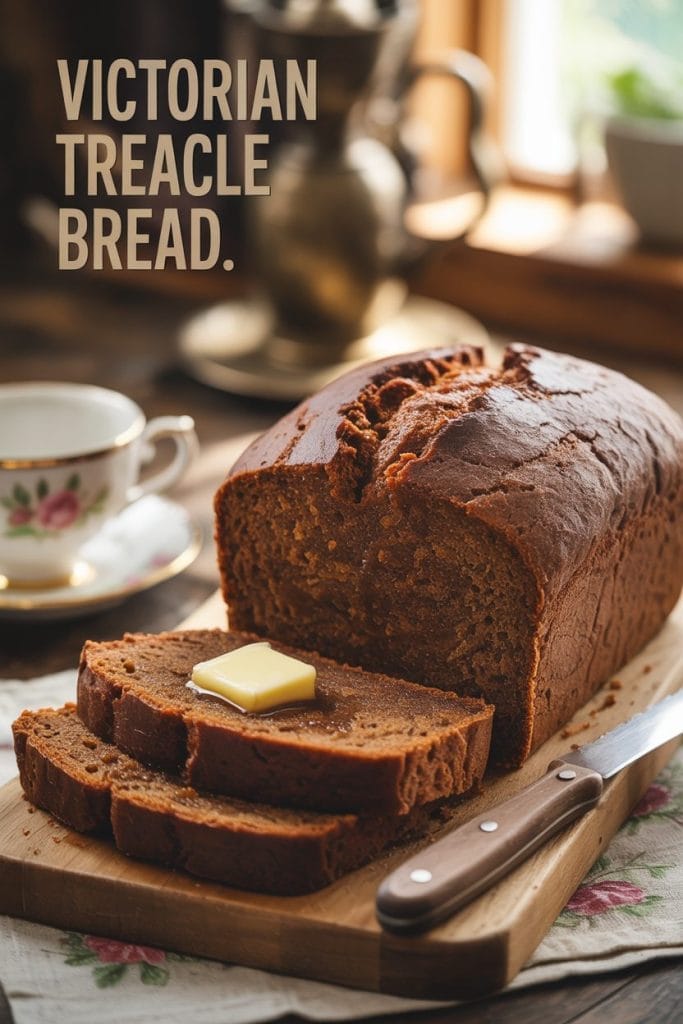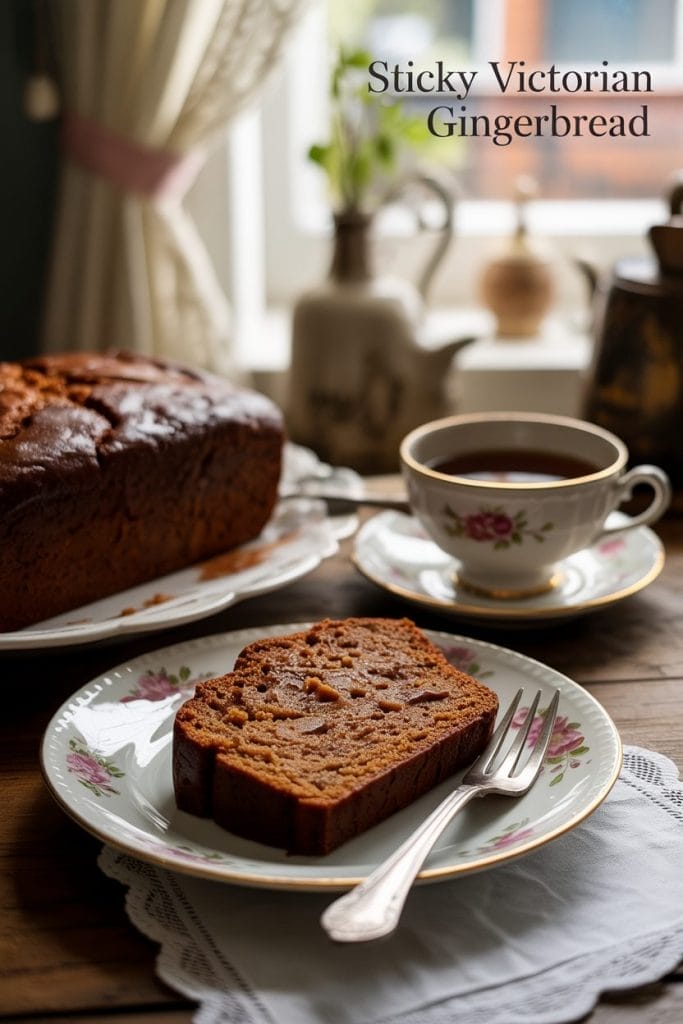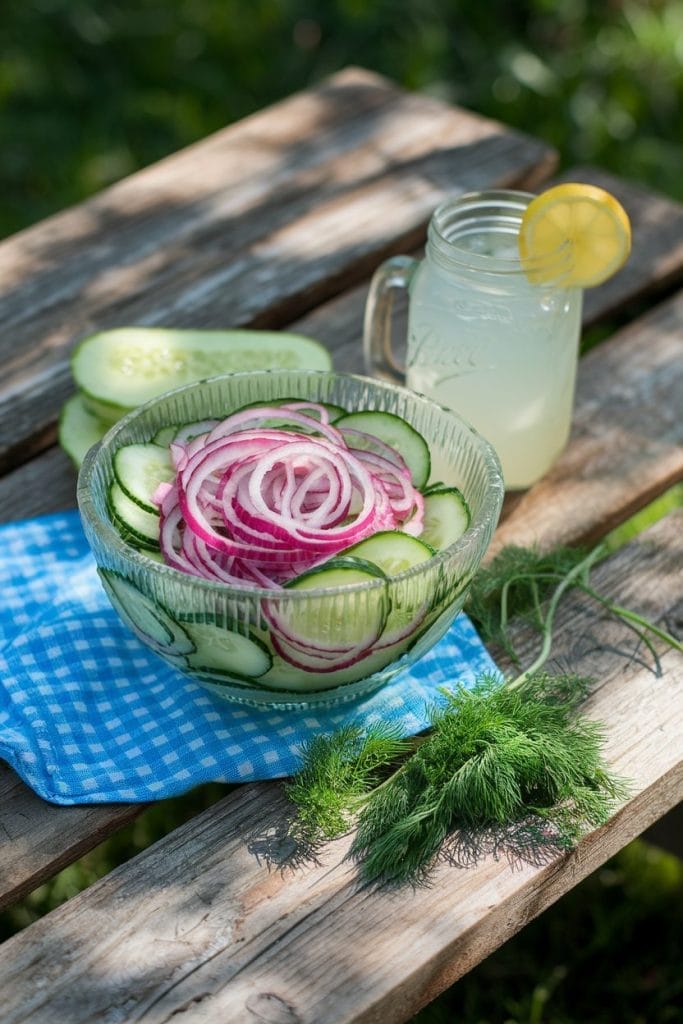Home > Single Recipes > Wartime Vegetable Pasty: A Frugal and Filling Treat
Last Updated: February 11, 2025
I Made These FREE Vintage Recipe Tools JUST For You
This recipe was created with help from AI tools and carefully reviewed by a human. For more on how we use AI on this site, check out our Editorial Policy. Classic Fork earns a small commission from Amazon and other affiliate links at no extra cost to you, helping us keep our content free and honest.
Wartime Vegetable Pasty: A Frugal and Filling Treat
Time Period:
Meal Type:
Core Ingredient:
Cuisine:
Cooking Time: 25 minutes
Prep Time: 15 minutes
Total Time: 40 minutes
Servings: 4 pasties
Calories: 220 per pasty
During World War II, rationing changed the way people cooked. Despite the limitations, homemakers got creative, turning simple ingredients into hearty, satisfying meals. The Vegetable Pasty is one such creation – a humble dish that blends resourcefulness with comfort.
Perfect for a quick snack or a wholesome meal, this pasty will transport you back to a time when every scrap of food mattered.

What Would You Cook in Wartime?
Step back in time and discover what you could make with limited wartime rations
History
The Vegetable Pasty rose to popularity during World War II in Britain as rationing pushed cooks to stretch limited ingredients. With meat scarce and expensive, vegetables like potatoes, turnips, and carrots became the stars of the show.
The pastry itself was often made with “National Flour,” a wholemeal flour introduced to maximize resources. These pasties were portable, economical, and hearty, making them a staple for families and workers alike.
Equipments
- Large mixing bowl (I love this mixing bowl set)
- Rolling pin
- Baking tray
- Pastry cutter or knife (Chefs envy this knife set)
- Small saucepan (this is the FATHER of all saucepans!)
- Fork (for crimping the edges)
- Parchment paper
Ingredients
For the pastry:
- 2 cups wholemeal flour (or all-purpose flour if unavailable)
- 1/2 teaspoon salt
- 1/3 cup lard or margarine (ration-friendly substitute)
- 4-5 tablespoons cold water
For the filling:
- 1 cup diced potatoes (peeled)
- 1/2 cup diced carrots
- 1/2 cup diced turnips or swede
- 1 small onion, finely chopped
- 1/4 teaspoon salt
- 1/4 teaspoon pepper
- 1/4 teaspoon dried thyme (optional, if available)
- 1 tablespoon butter or margarine (for sautéing)
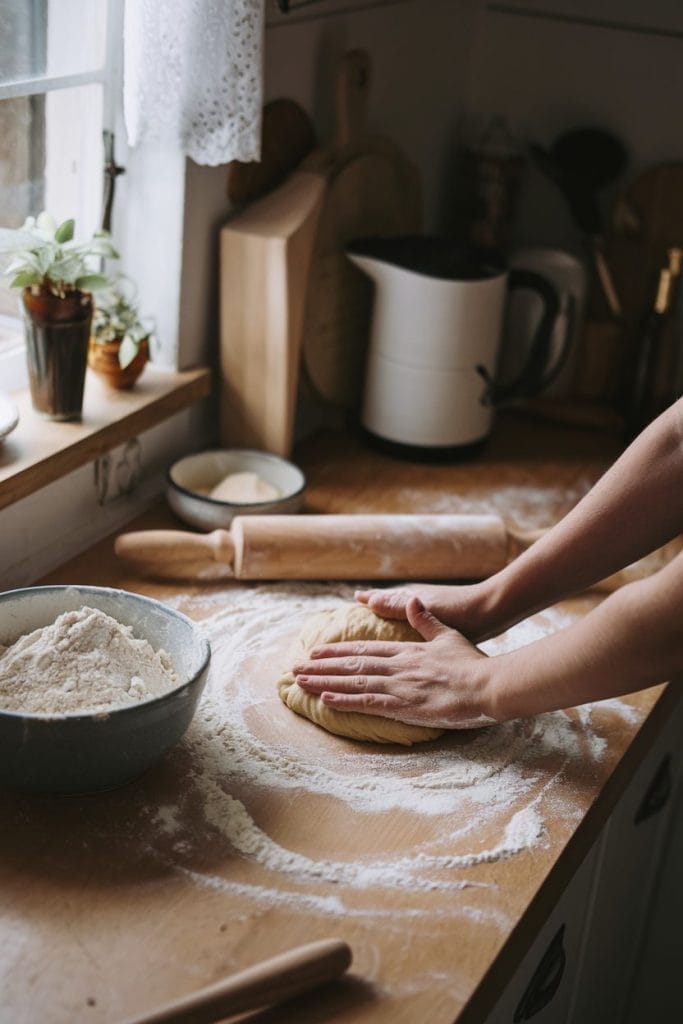
Instructions
Step 1: Prepare the pastry
- Combine dry ingredients: In a large mixing bowl, combine the flour and salt.
- Incorporate the fat: Rub in the lard or margarine with your fingers until the mixture resembles breadcrumbs.
- Add water: Gradually add cold water, one tablespoon at a time, until the dough comes together. Wrap the dough in a clean cloth or plastic wrap and let it rest while you prepare the filling.
Step 2: Cook the filling
- Prepare vegetables: Dice the potatoes, carrots, and turnips into small cubes for even cooking.
- Sauté the onion: In a small saucepan, melt the butter and sauté the chopped onion until translucent.
- Combine ingredients: Add the diced vegetables to the pan. Season with salt, pepper, and thyme. Cook for 5-7 minutes, stirring occasionally, until slightly softened. Remove from heat and allow the filling to cool slightly.
Step 3: Assemble the pasties
- Roll out the dough: On a floured surface, roll the pastry dough to about 1/8-inch thickness. Cut into 6-inch circles (use a plate or bowl as a guide).
- Add the filling: Place a generous scoop of the vegetable filling in the center of each circle, leaving space at the edges.
- Seal the pasties: Fold the dough over the filling to create a semi-circle. Crimp the edges with a fork to seal.
- Prepare for baking: Place the pasties on a parchment-lined baking tray. Prick the tops with a fork to allow steam to escape.

Step 4: Bake the pasties
- Bake: Preheat your oven to 375°F (190°C). Bake the pasties for 20-25 minutes, or until the pastry is golden brown.
- Cool and serve: Allow the pasties to cool slightly before serving. They’re delicious warm or at room temperature!
Special Notes
- These pasties are versatile! You can substitute vegetables based on availability. Parsnips, leeks, or cabbage work wonderfully.
- For a more authentic wartime experience, use National Flour or wholemeal flour.
- If you’re short on fat, a little milk brushed on the dough will help create a golden crust.
- These pasties store well! Refrigerate leftovers and reheat in the oven for 10 minutes.
Nutrition
| Nutrient | Amount per Pasty |
|---|---|
| Calories | 220 |
| Protein | 4g |
| Carbohydrates | 32g |
| Fat | 8g |
| Fiber | 4g |
| Sodium | 310mg |

Wartime Vegetable Pasty
During World War II, rationing changed the way people cooked. Despite the limitations, homemakers got creative, turning simple ingredients into hearty, satisfying meals. The Vegetable Pasty is one such creation – a humble dish that blends resourcefulness with comfort.
Ingredients
For the pastry
- 2 cups wholemeal flour (or all-purpose flour if unavailable)
- 1/2 teaspoon salt
- 1/3 cup lard or margarine (ration-friendly substitute)
- 4-5 tablespoons cold water
For the filling
- 1 cup diced potatoes (peeled)
- 1/2 cup diced carrots
- 1/2 cup diced turnips or swede
- 1 small onion, finely chopped
- 1/4 teaspoon salt
- 1/4 teaspoon pepper
- 1/4 teaspoon dried thyme (optional, if available)
- 1 tablespoon butter or margarine (for sautéing)
Instructions
Step 1: Prepare the pastry
- Combine dry ingredients: In a large mixing bowl, combine the flour and salt.
- Incorporate the fat: Rub in the lard or margarine with your fingers until the mixture resembles breadcrumbs.
- Add water: Gradually add cold water, one tablespoon at a time, until the dough comes together. Wrap the dough in a clean cloth or plastic wrap and let it rest while you prepare the filling.
Step 2: Cook the filling
- Prepare vegetables: Dice the potatoes, carrots, and turnips into small cubes for even cooking.
- Sauté the onion: In a small saucepan, melt the butter and sauté the chopped onion until translucent.
- Combine ingredients: Add the diced vegetables to the pan. Season with salt, pepper, and thyme. Cook for 5-7 minutes, stirring occasionally, until slightly softened. Remove from heat and allow the filling to cool slightly.
Step 3: Assemble the pasties
- Roll out the dough: On a floured surface, roll the pastry dough to about 1/8-inch thickness. Cut into 6-inch circles (use a plate or bowl as a guide).
- Add the filling: Place a generous scoop of the vegetable filling in the center of each circle, leaving space at the edges.
- Seal the pasties: Fold the dough over the filling to create a semi-circle. Crimp the edges with a fork to seal.
- Prepare for baking: Place the pasties on a parchment-lined baking tray. Prick the tops with a fork to allow steam to escape.
Step 4: Bake the pasties
- Bake: Preheat your oven to 375°F (190°C). Bake the pasties for 20-25 minutes, or until the pastry is golden brown.
- Cool and serve: Allow the pasties to cool slightly before serving. They’re delicious warm or at room temperature!
Notes
- These pasties are versatile! You can substitute vegetables based on availability. Parsnips, leeks, or cabbage work wonderfully.
- For a more authentic wartime experience, use National Flour or wholemeal flour.
- If you’re short on fat, a little milk brushed on the dough will help create a golden crust.
- These pasties store well! Refrigerate leftovers and reheat in the oven for 10 minutes.
Nutrition Information
Yield 4 Serving Size 1 pastyAmount Per Serving Calories 220Total Fat 8gSodium 310mgCarbohydrates 32gFiber 4gProtein 4g

Maggie Hartwell
Hi there, I’m Maggie Hartwell, but you can call me Maggie—the apron-clad foodie behind Classic Fork! I created Classic Fork because I’m convinced food has a way of telling stories that words can’t. So, grab a fork and dig in. The past never tasted so good!

